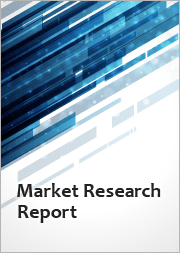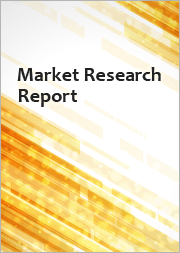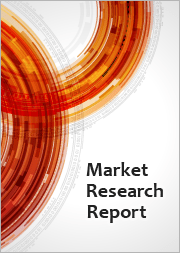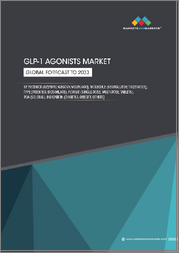
|
시장보고서
상품코드
1792333
종양학용 바이오시밀러 시장 보고서(2025-2033년) : 약제 유형, 암 유형, 유통 채널, 지역별Oncology Biosimilars Market Report by Drug Type, Cancer Type, Distribution Channel, and Region 2025-2033 |
||||||
세계의 종양학용 바이오시밀러 시장 규모는 2024년 58억 달러에 달했습니다. 향후 IMARC Group은 시장 규모가 2033년에는 352억 달러에 이르고, 2025-2033년의 성장률(CAGR)은 21.15%가 될 것으로 예측했습니다.
암은 세포의 이상 증식에 의해 발생하는 생활 습관병이며 때로는 종양이 형성되기도 합니다. 현재, 효과적인 암 치료의 대부분은 생물제제라고도 불리는 생물학적 약제에 기초하고 있으며, 여기에는 면역 요법뿐만 아니라 표적 요법도 포함됩니다. 이러한 약물은 박테리아, 효모, 동식물 세포 등의 생체를 사용하여 제조되므로 복잡한 제조 공정과 긴 개발 기간이 필요합니다. 그 결과, 이러한 약제의 비용은 상대적으로 높아지고, 암 치료의 지출을 높이고 있습니다. 치료비를 낮추기 위해 선발 제품인 암 생물제제의 바이오시밀러 개발에 대한 관심이 높아지고 있습니다. 이러한 바이오시밀러는 효능과 안전성의 관점에서 참조 생물제제와 매우 유사하며 저비용이기 때문에 암 치료 비용을 크게 줄일 수 있습니다.
수년에 걸쳐, 노인 인구 증가와 환경 오염으로 인해 세계적으로 암의 유병률이 증가하고 있습니다. 이러한 요인은 암 치료비의 상승과 함께 세계의 헬스케어 시스템의 부담을 증대시키고 있습니다. 따라서 각국은 비용 억제책으로 바이오시밀러의 도입을 추진하고 있습니다. 예를 들어, 미국 식품의약국(USFDA)은 바이오시밀러에 대한 교육을 의사와 환자에게 제공하기 위한 정보 자료를 작성하고 있습니다. 이와는 별도로 합리적인 가격의 의약품을 이용할 수 있게 되면서 환자의 접근성 개선뿐만 아니라 치료의 조기화 및 확대로 이어지고 있습니다. 이 외에도 경쟁은 산업 경쟁을 강화하고 생물제제의 가격을 더욱 낮출 수 있습니다. 그 밖의 개발 요인으로는 브랜드 생물제제의 특허 만료가 다가오고 있는 것, 바이오시밀러 제조업체의 연구 개발 활동이 활발해지고 있는 것 등을 들 수 있습니다.
이 보고서에서 다루는 주요 질문
- 세계의 종양학용 바이오시밀러 시장의 현재까지의 추이와 향후의 추이는?
- COVID-19가 세계의 종양학용 바이오시밀러 산업에 미친 영향은?
- 세계의 종양학용 바이오시밀러 산업의 주요 지역 시장은?
- 약제 유형에 따른 시장 분석은?
- 암 유형에 따른 시장 분석은?
- 유통채널에 따른 시장 분석은?
- 세계의 종양학용 바이오시밀러 산업 밸류체인의 다양한 단계는?
- 세계의 종양학용 바이오시밀러 산업의 주요 촉진요인과 과제는?
- 세계의 종양학용 바이오시밀러 산업의 구조와 주요 진출기업은?
- 세계의 종양학용 바이오시밀러 산업의 경쟁 정도는?
목차
제1장 서문
제2장 조사 범위와 조사 방법
- 조사의 목적
- 이해관계자
- 데이터 소스
- 1차 정보
- 2차 정보
- 시장 추정
- 상향식 접근
- 하향식 접근
- 조사 방법
제3장 주요 요약
제4장 소개
- 개요
- 주요 산업 동향
제5장 세계의 종양학용 바이오시밀러 시장
- 시장 개요
- 시장 실적
- COVID-19의 영향
- 시장 분석 : 약제 유형별
- 시장 분석 : 암 유형별
- 시장 분석 : 유통채널별
- 시장 분석 : 지역별
- 시장 예측
제6장 시장 분석 : 약제 유형별
- 단일클론항체
- 면역조절제
- G-CSF
- 조혈제
- 기타
제7장 시장 분석 : 암 유형별
- 폐암
- 대장암
- 자궁경부암
- 유방암
- 신장암
- 위암
- 뇌종양
- 기타
제8장 시장 분석 : 유통채널별
- 병원 약국
- 온라인 약국
- 소매 약국
- 기타
제9장 시장 분석 : 지역별
- 유럽
- 아시아태평양
- 북미
- 중동 및 아프리카
- 라틴아메리카
제10장 SWOT 분석
- 개요
- 강점
- 약점
- 기회
- 위협
제11장 밸류체인 분석
제12장 Porter's Five Forces 분석
- 개요
- 구매자의 협상력
- 공급기업의 협상력
- 경쟁도
- 신규 참가업체의 위협
- 대체품의 위협
제13장 가격 분석
제14장 경쟁 구도
- 시장 구조
- 주요 기업
- 주요 기업 프로파일
- Biocon Limited
- Celltrion Inc.
- Dr. Reddy's Laboratories Ltd.
- Intas Pharmaceuticals Ltd.
- STADA Arzneimittel AG
- Pfizer Inc.
- Apotex Inc.
- Teva Pharmaceutical Industries Ltd.
- Sandoz International GmbH
- BIOCAD BIoTechnology Company
- Mylan NV
- F. Hoffmann-La Roche AG
The global oncology biosimilars market size reached USD 5.8 Billion in 2024. Looking forward, IMARC Group expects the market to reach USD 35.2 Billion by 2033, exhibiting a growth rate (CAGR) of 21.15% during 2025-2033.
Cancer is a lifestyle disease that occurs due to the abnormal growth of cells and may result in the formation of a tumor. At present, most of the effective cancer treatments are based on biological drugs, also known as biologics, and include targeted therapies as well as immunotherapies. These drugs are produced using living organisms, including bacteria, yeast, and animal or plant cells, and require complex manufacturing processes and long development time. As a result, the cost of these drugs is relatively higher, which adds to the expense of cancer treatment. To lower the price of treatment, the interest in the development of biosimilars of branded oncology biologics has been increasing. These biosimilars are highly similar to the reference biologics in terms of effectiveness and safety and can help in significantly reducing the expenditure on cancer treatment due to their lower cost.
Over the years, the rising number of geriatric population and environmental degradation have increased the prevalence of cancer across the globe. These factors, along with the inflating cost of cancer care, have increased the burden on healthcare systems worldwide. Consequently, governing authorities in numerous countries are promoting the uptake of biosimilars as a cost-containment measure. For instance, the United States Food and Drug Administration (USFDA) has developed information materials for physicians and patients to educate them about biosimilars. Apart from this, the availability of affordable medication has also been associated with earlier and wider therapy use as well as improved patient access. Besides this, oncology biosimilars can also increase industry competition, owing to which they have the potential to drive down the prices of biological drugs further. Some of the other growth-inducing factors for the market include approaching patent expiries of branded biologics and increasing research and development (R&D) activities by biosimilar manufacturers.
Key Market Segmentation:
Breakup by Drug Type:
- Monoclonal Antibody
- Immunomodulators
- G-CSF
- Hematopoietic Agents
- Others
Breakup by Cancer Type:
- Lung Cancer
- Colorectal Cancer
- Cervical Cancer
- Breast Cancer
- Kidney Cancer
- Stomach Cancer
- Brain Cancer
- Others
Breakup by Distribution Channel:
- Hospital Pharmacies
- Online Pharmacies
- Retail Pharmacies
- Others
Breakup by Region:
- Europe
- Asia Pacific
- North America
- Middle East and Africa
- Latin America
Competitive Landscape:
The report has also analyzed the competitive landscape of the market with some of the key players being Biocon Limited, Celltrion Inc., Dr. Reddy's Laboratories Ltd., Intas Pharmaceuticals Ltd., STADA Arzneimittel AG, Pfizer Inc., Apotex Inc., Teva Pharmaceutical Industries Ltd., Sandoz International GmbH, BIOCAD Biotechnology Company, Mylan N.V., F. Hoffmann-La Roche AG, etc.
Key Questions Answered in This Report:
- How has the global oncology biosimilars market performed so far and how will it perform in the coming years?
- What has been the impact of COVID-19 on the global oncology biosimilars industry?
- What are the key regional markets in the global oncology biosimilars industry?
- What is the breakup of the market based on the drug type?
- What is the breakup of the market based on the cancer type?
- What is the breakup of the market based on the distribution channel?
- What are the various stages in the value chain of the global oncology biosimilars industry?
- What are the key driving factors and challenges in the global oncology biosimilars industry?
- What is the structure of the global oncology biosimilars industry and who are the key players?
- What is the degree of competition in the global oncology biosimilars industry?
Table of Contents
1 Preface
2 Scope and Methodology
- 2.1 Objectives of the Study
- 2.2 Stakeholders
- 2.3 Data Sources
- 2.3.1 Primary Sources
- 2.3.2 Secondary Sources
- 2.4 Market Estimation
- 2.4.1 Bottom-Up Approach
- 2.4.2 Top-Down Approach
- 2.5 Forecasting Methodology
3 Executive Summary
4 Introduction
- 4.1 Overview
- 4.2 Key Industry Trends
5 Global Oncology Biosimilars Market
- 5.1 Market Overview
- 5.2 Market Performance
- 5.3 Impact of COVID-19
- 5.4 Market Breakup by Drug Type
- 5.5 Market Breakup by Cancer Type
- 5.6 Market Breakup by Distribution Channel
- 5.7 Market Breakup by Region
- 5.8 Market Forecast
6 Market Breakup by Drug Type
- 6.1 Monoclonal Antibody
- 6.1.1 Market Trends
- 6.1.2 Market Forecast
- 6.2 Immunomodulators
- 6.2.1 Market Trends
- 6.2.2 Market Forecast
- 6.3 G-CSF
- 6.3.1 Market Trends
- 6.3.2 Market Forecast
- 6.4 Hematopoietic Agents
- 6.4.1 Market Trends
- 6.4.2 Market Forecast
- 6.5 Others
- 6.5.1 Market Trends
- 6.5.2 Market Forecast
7 Market Breakup by Cancer Type
- 7.1 Lung Cancer
- 7.1.1 Market Trends
- 7.1.2 Market Forecast
- 7.2 Colorectal Cancer
- 7.2.1 Market Trends
- 7.2.2 Market Forecast
- 7.3 Cervical Cancer
- 7.3.1 Market Trends
- 7.3.2 Market Forecast
- 7.4 Breast Cancer
- 7.4.1 Market Trends
- 7.4.2 Market Forecast
- 7.5 Kidney Cancer
- 7.5.1 Market Trends
- 7.5.2 Market Forecast
- 7.6 Stomach Cancer
- 7.6.1 Market Trends
- 7.6.2 Market Forecast
- 7.7 Brain Cancer
- 7.7.1 Market Trends
- 7.7.2 Market Forecast
- 7.8 Others
- 7.8.1 Market Trends
- 7.8.2 Market Forecast
8 Market Breakup by Distribution Channel
- 8.1 Hospital Pharmacies
- 8.1.1 Market Trends
- 8.1.2 Market Forecast
- 8.2 Online Pharmacies
- 8.2.1 Market Trends
- 8.2.2 Market Forecast
- 8.3 Retail Pharmacies
- 8.3.1 Market Trends
- 8.3.2 Market Forecast
- 8.4 Others
- 8.4.1 Market Trends
- 8.4.2 Market Forecast
9 Market Breakup by Region
- 9.1 Europe
- 9.1.1 Market Trends
- 9.1.2 Market Forecast
- 9.2 Asia Pacific
- 9.2.1 Market Trends
- 9.2.2 Market Forecast
- 9.3 North America
- 9.3.1 Market Trends
- 9.3.2 Market Forecast
- 9.4 Middle East and Africa
- 9.4.1 Market Trends
- 9.4.2 Market Forecast
- 9.5 Latin America
- 9.5.1 Market Trends
- 9.5.2 Market Forecast
10 SWOT Analysis
- 10.1 Overview
- 10.2 Strengths
- 10.3 Weaknesses
- 10.4 Opportunities
- 10.5 Threats
11 Value Chain Analysis
12 Porters Five Forces Analysis
- 12.1 Overview
- 12.2 Bargaining Power of Buyers
- 12.3 Bargaining Power of Suppliers
- 12.4 Degree of Competition
- 12.5 Threat of New Entrants
- 12.6 Threat of Substitutes
13 Price Analysis
14 Competitive Landscape
- 14.1 Market Structure
- 14.2 Key Players
- 14.3 Profiles of Key Players
- 14.3.1 Biocon Limited
- 14.3.2 Celltrion Inc.
- 14.3.3 Dr. Reddy's Laboratories Ltd.
- 14.3.4 Intas Pharmaceuticals Ltd.
- 14.3.5 STADA Arzneimittel AG
- 14.3.6 Pfizer Inc.
- 14.3.7 Apotex Inc.
- 14.3.8 Teva Pharmaceutical Industries Ltd.
- 14.3.9 Sandoz International GmbH
- 14.3.10 BIOCAD Biotechnology Company
- 14.3.11 Mylan N.V.
- 14.3.12 F. Hoffmann-La Roche AG






